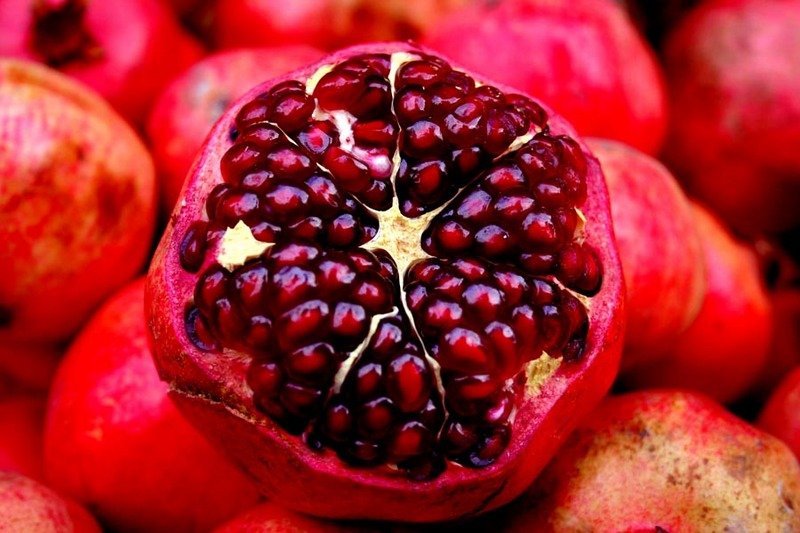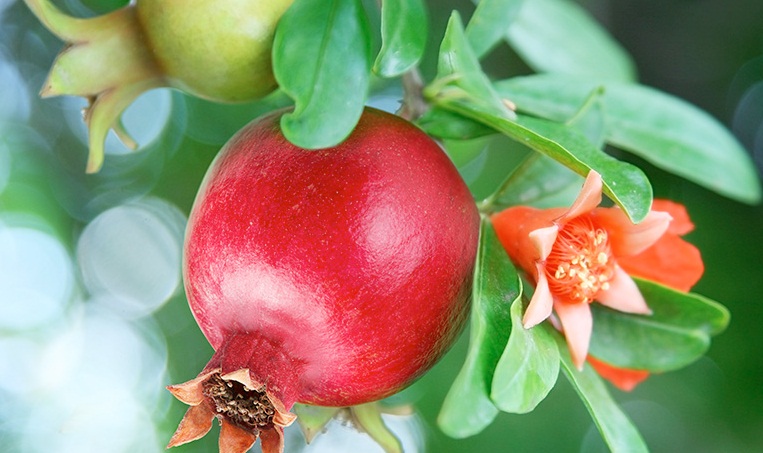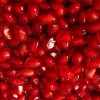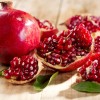Is there a seedless pomegranate?
Content
General information
Pomegranate is one of the most ancient fruits. The first mentions of him are present in the mythology of Ancient Greece and Rome. Since then, the pomegranate tree has spread almost all over the world, acquired a cultural form, and today the number of varieties of this unique plant is estimated at several hundred. On the territory of the former USSR, cultural pomegranate was first cultivated in the Transcaucasus. In the countries of Central Asia, it is found in the wild, and its cultural forms are grown on an industrial scale.
Thanks to the efforts of breeders, there are many varieties and varieties of pomegranate. In addition to the usual ruby, there are fruits of yellow, white, brown or pinkish color, which you will not surprise anyone with. But the science of botany does not stand still, and recently another innovation has appeared in this culture - seedless pomegranate. For the first time, a seedless variety was grown by American scientists, from where it began to spread. Breeders in many countries began to cross the hybrid with varieties adapted to the local climate, or to acclimate an existing one. As a result, several seedless varieties have emerged.
Video "Description"
From the video you will learn a lot of interesting things about this fruit.
What does it look like
According to the authors of the development, the original seedless pomegranate does not look different from the ordinary one, and the same conditions are required for its cultivation. But since it was partially modified in the process of crossing with other varieties, some fruits may have a lighter or even yellowish color of the peel. In addition, the peel of seedless fruits is thinner and may crack during transportation or careless handling.
As for the grains, they are more juicy due to the absence of hard seeds. The color of the seeds can vary from maroon to light red. There are seeds in the beans, but they are very soft, transparent and easy to chew. Judging by consumer reviews, seedless pomegranate grains are sweeter, devoid of any bitterness and acidity, which will please kids and those with a sweet tooth. It should be noted that the pomegranate varieties bred for Europe are more productive and resistant to cold and disease than their predecessors.
Views
Of the seedless fruits, the most popular and widely cultivated are two varieties:
- American Wonderful (Wonderful) - small fruits (250-300 g), white-yellow color, with a blush on one side, the grains are rather small, but very sweet and soft;
- Spanish variety Mollar de Elche (Mollar de Elche) - cultivated in Spain on an industrial scale, the fruits are medium or large (400-800 g), the peel is light red, resistant to damage, the grains are sweet, with edible bones.

It should be noted that all seedless pomegranates are suitable for both fresh consumption and processing.For example, about 20% more juice is obtained from them than from an ordinary fruit with seeds.
Growing and care
Today seedless pomegranates are cultivated in Southern Europe, mainly in Spain, from where they are exported to us. Growing a pomegranate tree in a climate of the middle zone, not to mention the North, is quite problematic, but since a gradual warming of the climate has been taking place in recent years, some gardeners have begun experimenting with growing pomegranates in the open field. It should be noted that it is unpretentious to the soil. The tree feels comfortable in rocky areas with sandy, well-drained soil. The main condition for obtaining sweet fruits is good light and moderate humidity during fruiting.
The pomegranate planting site should be open to the sun and preferably windless. The size of the planting hole depends on the size of the seedling rhizome, but usually not less than 60x60 cm at a depth of 50 cm. Part of the earth dug from the planting hole must be mixed with fertilizers (humus 0.5 buckets, superphosphate 300 g), and then put back asleep. Place the seedling vertically in the hole and manually cover it with earth, so that the root collar of the plant is not buried in the soil.
Taking care of a pomegranate outdoors is simple, however, it has some features:
- low temperatures are harmful for the tree, so for the winter it needs to be covered, and not only the roots, but also the crown;
- while the tree is small, it must be shaded from the scorching sun, since burns can form on the thin bark;
- despite the high resistance to drought, an adult pomegranate needs to be watered periodically - during the flowering period, watering should be more intense, since the buds can crumble from a lack of moisture, watering should be reduced during the ripening of the fruits, otherwise the fruits may crack;
- in fertile soil, pomegranates can do without fertilizers, but if you want to get tasty and high-quality fruits, then periodically (in early spring, during the formation of the ovary and before wintering) the tree needs to be fed with mineral mixtures and organic matter;
- every spring, formative pruning is carried out: damaged, dry and thickening small branches are removed, optimally 5-6 main shoots should be left on a bush or trunk;
- if the pomegranate grows in the garden along with other fruit trees, then it is likely that it can get sick (powdery mildew, gray rot, leaf spot) or become the object of an invasion of pests (spider mites, scale insects) - periodically inspect the tree so as not to miss the onset of pathological process, in early spring for prevention can be sprayed with Bordeaux liquid.
Beneficial features
We are all accustomed to the fact that pomegranate seeds should be of an intense burgundy color, because it is these red pigments that have a beneficial effect on the process of hematopoiesis. And since most seedless pomegranate varieties have lighter grains, some consumers begin to doubt or underestimate the benefits of the berry.
It will be fair to say that any pomegranate is a source of vitamins, micro and macro elements, acids, antioxidants, tannins, anthocyanins. Seedless fruits contain vitamins C, A, E, B5 (pantothenic acid), as well as calcium, potassium, iodine, silicon, copper, manganese, and iron.
Pomegranate is considered a medicinal plant, since almost all of its parts: tree bark, fruit peel and seed juice are used in folk medicine. Pomegranate juice is an excellent tonic, it improves metabolism, increases immunity and hemoglobin levels, and has antimicrobial effect. And if we compare the benefits of fruits, then we can say that seedless ones even have an advantage, because many useful substances are also concentrated in soft bones.
Video "Benefits and Harms"
From the video you will learn how harmful and useful this fruit is.



